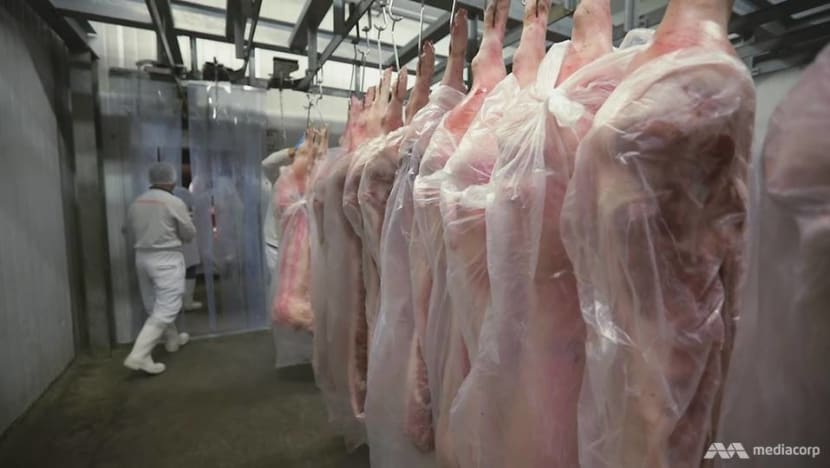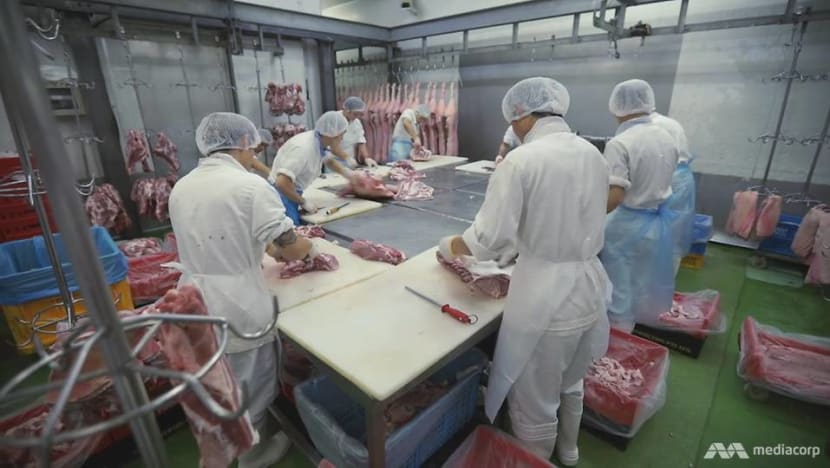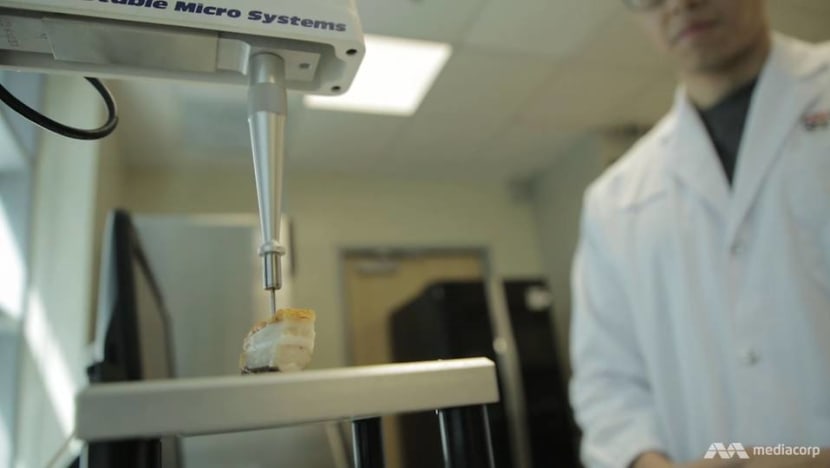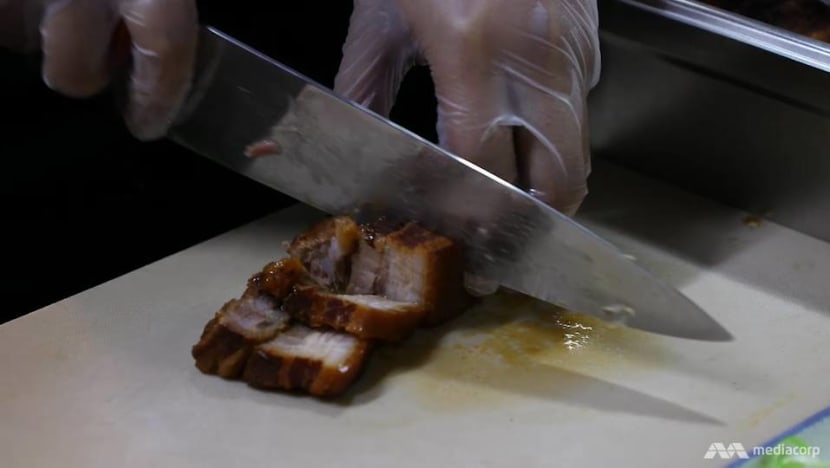What's making pork more expensive? There's a fatty belly factor
Pork prices in Singapore have increased steadily owing to trends ranging from changing consumer preferences to rising oil prices, as For Food’s Sake! discovers.

Pork is Singapore’s second favourite meat, with more than 126,000 tonnes imported last year.
SINGAPORE: Sio bak (roast pork belly) is one of the fattiest cuts of meat — seemingly decadent but hardly unwanted. And demand for it has indirectly driven up pork prices, in Singapore and worldwide.
“The demand has increased, pork belly prices have increased, and what happens is that you can’t just keep selling pork belly — you have to basically sell all the cuts in the carcass,” said Huber’s Butchery executive director Andre Huber.
“Naturally, that cut has to increase (in price) to control the demand because there’s only a limited supply.”
Just last year, pork fat was reported as one of the world’s top 10 most nutritious foods, as ranked by scientists.
“The Europeans, the Americans … are also now starting to consume a lot (of pork belly),” added Huber, whose butcher shop is the largest in Singapore, supplying meat to almost 1,000 restaurants and hotels.
“So if demand from the world is increasing for this particular cut, then yes, I see the price (of pork belly) really starting to go up more and more.”

In Singapore, the average retail prices of chilled pork have increased steadily over the past decade: By 11 per cent for lean pork, 15 per cent for pork ribs and more than 20 per cent for pork belly.
The programme For Food’s Sake! examines the factors, which include consumer preferences. (Watch this episode here.)
‘EVERYTHING ADDS UP’
Pork is Singapore’s second favourite meat after chicken; more than 126,000 tonnes of pork were imported last year.
The bulk of the fresh chilled pork comes from Indonesia, Australia and East Malaysia, while the frozen pork and other pork products are from countries such as Brazil, the Netherlands, Spain and the United States.
WATCH: Where Singapore's pork comes from (Dur 3:11)

“Over the last 10 years, (feed prices) have increased by 40, 50 per cent. Bad weather or drought would affect prices badly, which is happening all the time,” said the veterinarian by training.
Transportation costs, which make up around 10 per cent of each pig’s selling price, have also gone up.
“Oil prices, in the last few years, haven’t been very good,” cited Ng, who rears around 65,000 pigs on his farm. “If you look at building a ship … the prices (of iron ore and other metals) have also increased.
Everything adds up, so we have no choice — everything has to go (up).
At importer OJJ Foods, which is responsible for almost a third of the chilled pork entering Singapore, the cost of labour — a big component of its overheads — has also inched up over the years.

The company processes and distributes both chilled and frozen pork, supplying the meat to major supermarkets here. Automation helps, but there is “not a lot of buffer”.
“We can’t say, ‘Just increase prices.’ But … if the raw material prices were to increase significantly —10, 15 per cent — we have to pass on (the increase) to the customer,” said OJJ Foods managing director Ting Puong Huat.
IS MORE FOR LESS POSSIBLE?
Supermarkets typically sell frozen pork belly now for about S$10 per kilogramme and chilled pork belly for S$14.50/kg.
Although chilled pork costs close to 50 per cent more, most of the consumers this programme interviewed choose to pay more for it because they believe it has better taste and texture compared with frozen pork.

But is that true? To find out, programme host Ming Tan roasted a fresh piece of pork belly and a frozen piece, and asked people whether they could discern a difference in flavour and texture.
Some of them could not, while others even preferred the frozen pork.
Professor William Chen, the director of Nanyang Technological University’s Food Science and Technology Programme, was also able to do a test using a texture analyser, which can be done for any food product.
He tested two samples of roast, one made from fresh chilled pork and the other, frozen pork. The analysis showed that the frozen pork was tenderer.

In addition, the scientist said nutrition is preserved better with the fast freezing of the pork, whereas fresh pork is more susceptible to bacteria contamination when put in storage and transported.
“When we immediately freeze (pork), all the nutrient value would be preserved. So it’s safer in a sense, and it’s cheaper than fresh pork,” he said.
And that goes for pork belly too.
Watch this episode of For Food's Sake! here.
















